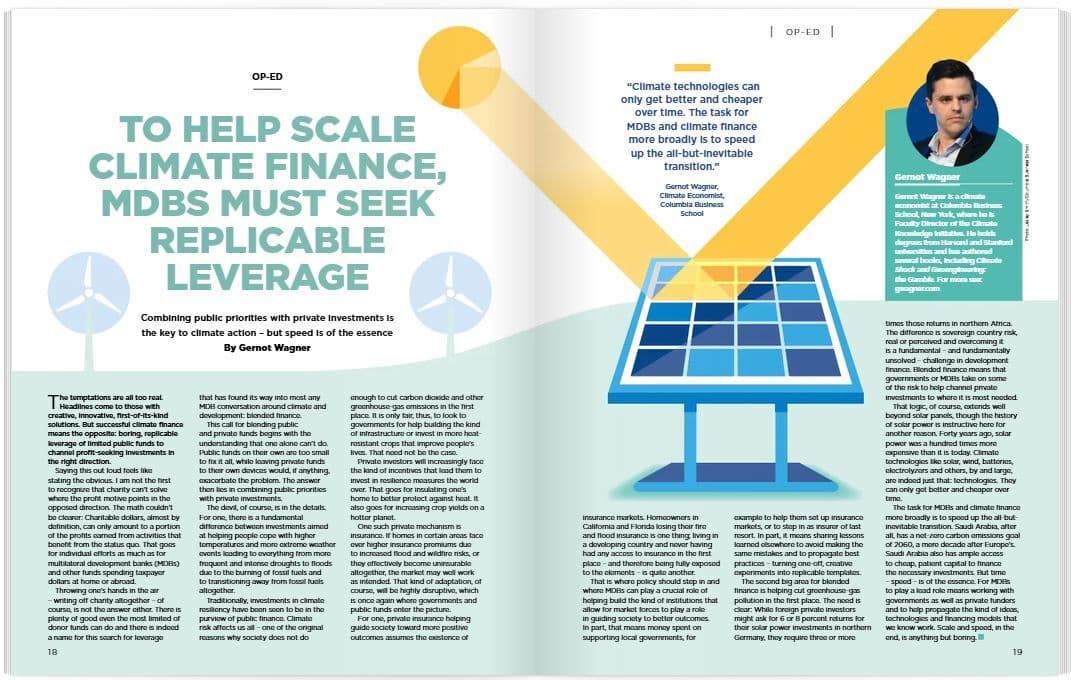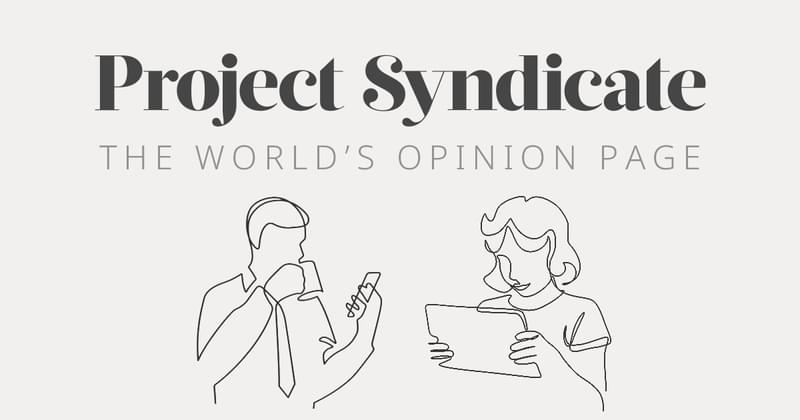To help scale climate finance, MDBs must seek replicable leverage
Combining public priorities with private investments is the key to climate action – but speed is of the essence

The temptations are all too real. Headlines come to those with creative, innovative, first-of-its-kind solutions. But successful climate finance means the opposite: boring, replicable leverage of limited public funds to channel profit-seeking investments in the right direction.
Saying this out loud feels like stating the obvious. I am not the first to recognize that charity can’t solve where the profit motive points in the opposed direction. The math couldn’t be clearer: Charitable dollars, almost by definition, can only amount to a portion of the profits earned from activities that benefit from the status quo. That goes for individual efforts as much as for multilateral development banks (MDBs) and other funds spending taxpayer dollars at home or abroad.
Throwing one’s hands in the air – writing off charity altogether – of course, is not the answer either. There is plenty of good even the most limited of donor funds can do and there is indeed a name for this search for leverage that has found its way into most any MDB conversation around climate and development: blended finance.
This call for blending public and private funds begins with the understanding that one alone can’t do. Public funds on their own are too small to fix it all, while leaving private funds to their own devices would, if anything, exacerbate the problem. The answer then lies in combining public priorities with private investments.
The devil, of course, is in the details. For one, there is a fundamental difference between investments aimed at helping people cope with higher temperatures and more extreme weather events leading to everything from more frequent and intense droughts to floods due to the burning of fossil fuels and to transitioning away from fossil fuels altogether.
Traditionally, investments in climate resiliency have been seen to be in the purview of public finance. Climate
risk affects us all – one of the original reasons why society does not do enough to cut carbon dioxide and other
greenhouse-gas emissions in the first place. It is only fair, thus, to look to governments for help building the kind
of infrastructure or invest in more heat resistant crops that improve people’s lives. That need not be the case.
Private investors will increasingly face the kind of incentives that lead them to invest in resilience measures the world over. That goes for insulating one’s home to better protect against heat. It also goes for increasing crop yields on a hotter planet.
One such private mechanism is insurance. If homes in certain areas face ever higher insurance premiums due to increased flood and wildfire risks, or they effectively become uninsurable altogether, the market may well work as intended. That kind of adaptation, of course, will be highly disruptive, which is once again where governments and public funds enter the picture.
For one, private insurance helping guide society toward more positive outcomes assumes the existence of insurance markets. Homeowners in California and Florida losing their fire and flood insurance is one thing; living in a developing country and never having had any access to insurance in the first place – and therefore being fully exposed to the elements – is quite another.
That is where policy should step in and where MDBs can play a crucial role of helping build the kind of institutions that allow for market forces to play a role in guiding society to better outcomes. In part, that means money spent on supporting local governments, for example to help them set up insurance markets, or to step in as insurer of last resort. In part, it means sharing lessons learned elsewhere to avoid making the same mistakes and to propagate best practices – turning one-off, creative experiments into replicable templates.
The second big area for blended finance is helping cut greenhouse-gas pollution in the first place. The need is clear: While foreign private investors might ask for 6 or 8 percent returns for their solar power investments in northern Germany, they require three or more times those returns in northern Africa. The difference is sovereign country risk, real or perceived and overcoming it is a fundamental – and fundamentally unsolved – challenge in development finance. Blended finance means that governments or MDBs take on some of the risk to help channel private investments to where it is most needed.
That logic, of course, extends well beyond solar panels, though the history of solar power is instructive here for another reason. Forty years ago, solar power was a hundred times more expensive than it is today. Climate technologies like solar, wind, batteries, electrolyzers and others, by and large, are indeed just that: technologies. They can only get better and cheaper over time.
The task for MDBs and climate finance more broadly is to speed up the all-but inevitable transition. Saudi Arabia, after all, has a net-zero carbon emissions goal of 2060, a mere decade after Europe’s. Saudi Arabia also has ample access to cheap, patient capital to finance the necessary investments. But time – speed – is of the essence. For MDBs to play a lead role means working with governments as well as private funders and to help propagate the kind of ideas, technologies and financing models that we know work. Scale and speed, in the end, is anything but boring.
Gernot Wagner is a climate economist at Columbia Business School, New York, where he is Faculty Director of the Climate Knowledge Initiative. He holds degrees from Harvard and Stanford universities and has authored several books, including Climate Shock and Geoengineering: the Gamble. For more see: gwagner.com.
Originally published in OPEC Fund Quarterly Q1.


